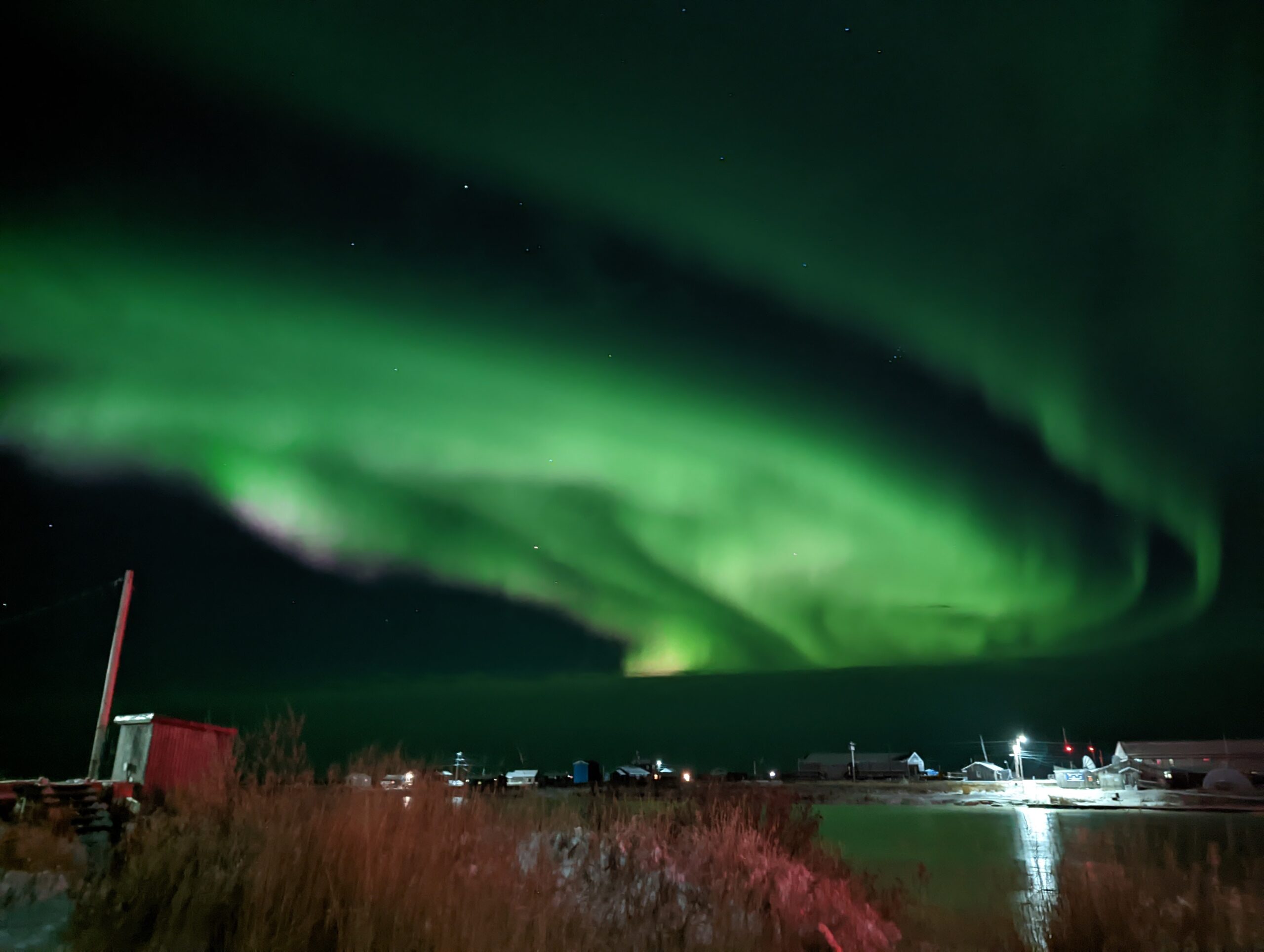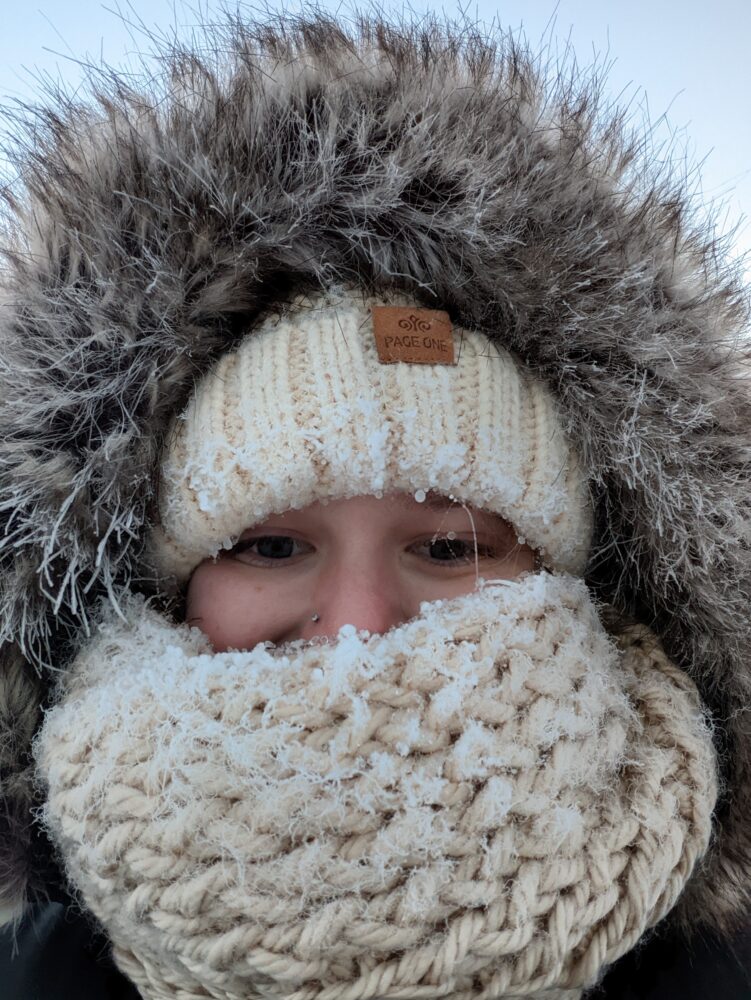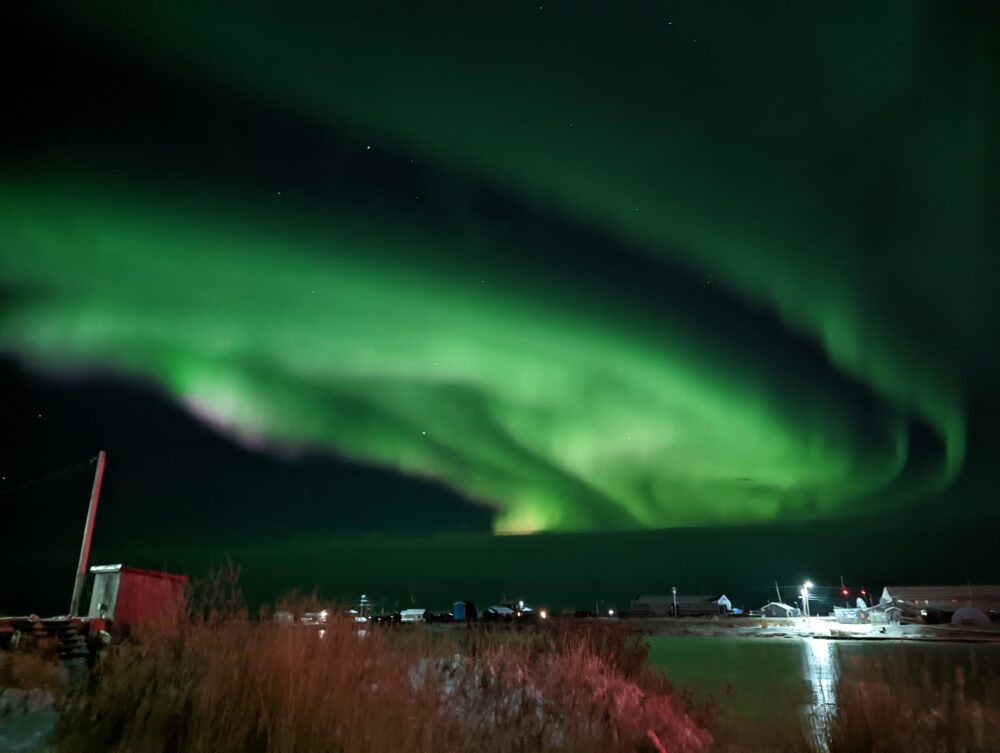
From Stockbridge to rural Alaska
Teacher settles in to life in remote village
by Karlee Fillmore
In July 2021, I left Stockbridge for a teaching job in Alaska’s Northwest Arctic Borough. The borough covers roughly 39,000 square miles. That’s only 1,000 square miles less than Michigan’s Lower Peninsula. The majority of those living in the borough are Inupiaq and subsistence activities are both a vital part of their culture and their livelihood. The borough is served by one school district, made up of 11 villages. None of the villages is on the road system, meaning the only way to reach them is by plane and depending on the village, boat or snowmobile.
I live and work in the second largest village in the borough, located just above the Arctic Circle. To reach my village, you have to take a jet from Anchorage to the largest village in the region, Kotzebue. From Kotzebue, you take a bush plane out to the village.
The bush planes are scheduled to come twice a day, seven days a week, weather permitting. Besides people, the planes bring mail and supplies. In the winter, the planes are the ONLY way to get supplies to the village (this includes groceries). It’s common to get on a bush plane headed to the village and find that half the seats have been removed, with stacks of boxes and totes tied down in their place. My village is built around a river, and it has boardwalks instead of roads. In the summer, people get around by boat, riding four-wheelers (called “hondas” regardless of brand), and walking.
In the winter, people walk or use snowmobiles (called “snowmachines” or “rigs”). Some people still use four-wheelers, although some days it’s too cold for them to start.
Speaking of winter, it starts early here. There is snow on the ground by the end of October, and it will stay until May. It’s typical to have multiple blizzard warnings throughout the winter. In the winter, days tend to have highs around minus 10, but it can get as low as 60 below zero. In January 2022, the temperature didn’t get warmer than minus 30 for three weeks, with wind chills frequently in the minus 40s.
Since extreme temperatures are the norm, and there are no cars in the village, the only time school is canceled for weather in my village is when there are whiteout conditions. Last year, we had school on multiple days where there were blizzard warnings, as well as on days with a wind chill of 65 below zero. Elementary students have outside recess until it’s minus 30 out. The majority of our students walk to school, many over a mile one way, so they’re used to being out in the cold.
The school I work at is one building that serves grades K-12, with about 275 students. Each grade has one class with sizes ranging from 28 (unusually large) to 12 students. I’ve been told that a typical class is about 16-18 students. We have no “specials” teachers, so elementary teachers are responsible for teaching their class PE, art and music.
While we don’t have specials teachers, we do have an Inupiaq teacher. Elementary students have Inupiaq five days per week. They learn the Inupiaq language, values, and cultural practices. This includes activities like beading, sewing animal skins, as well as identifying animal tracks and different kinds of fish.
Middle school students have Inupiaq five days per week for one semester, and participate in the same activities as the elementary students in addition to more advanced activities. The more advanced activities are setting and checking fishing nets (before the river freezes and after), cleaning and scaling fish, as well as processing different kinds of animals.
In addition to daily Inupiaq classes, our school partners with the National Selawik Wildlife Refuge (located near our village) to offer a science culture camp in September. Elementary students attend as a day trip. While there, they get to pick berries, check fishing nets, and then scale the fish from the nets.
Middle school students go for two or three days and do the same activities as the elementary students, as well as learn some basic survival skills.
The high school students go to culture camp for five days (Monday-Friday). They get to do everything the elementary and middle students do, as well as hunt game.
This year, our high schoolers got a moose while at culture camp! They quartered the moose out at camp, and then brought it back to the school for further processing. The middle and high schoolers got to help with the extensive work of processing the meat. The elementary classes were able to walk through and observe.
Once the moose was processed, there was enough meat that they were able to give some to the elders in the village and every high schooler that went to culture camp was able to take a bagful home.





